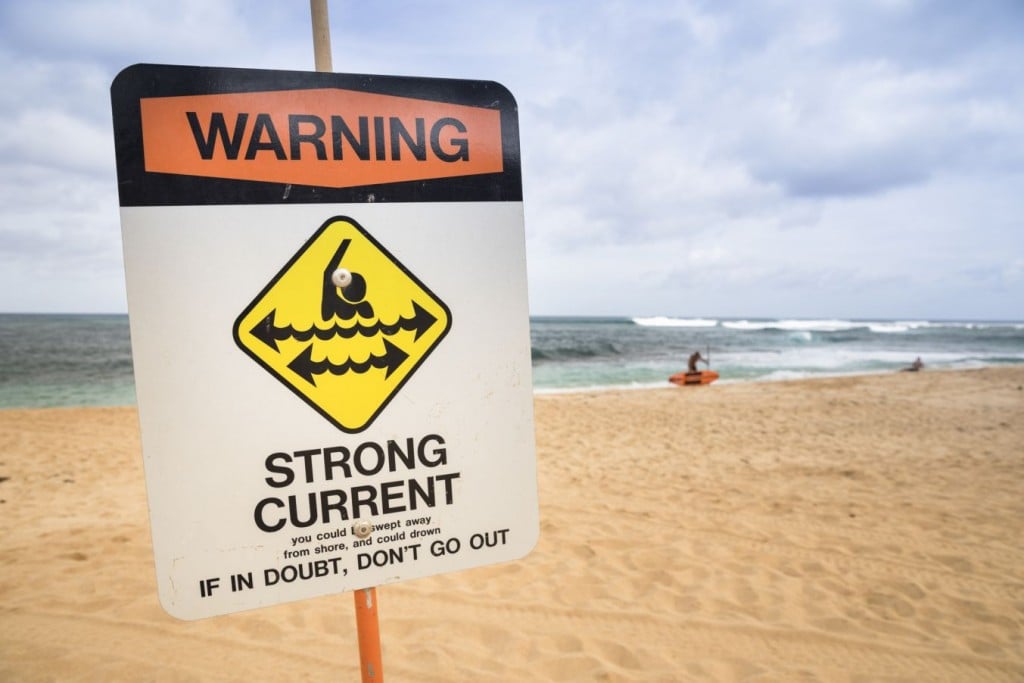Your Hawaiʻi Beach Safety Guide
How to make sure your beach day goes ... swimmingly.

Here are a few ocean safety tips to keep in mind the next time you’re headed to the beach.
General Safety

Photo: Getty Images
When in doubt, don’t go out. It’s as simple as that. If the ocean is looking extra turbulent from high winds, high waves or both, and you’re unsure if you can handle the conditions, avoid the situation entirely by not entering the water.
Watch for rip currents. Hawai‘i beaches are known for these powerful, narrow channels of fast-moving water that flow away from shore and out to sea, often referred to as rips. If you find yourself caught in one, do not attempt to swim against it to shore. Instead, keep calm and swim parallel to the shore until you exit the rip current, then swim toward land.
Always lock your car doors and hide your valuables. Just because Hawai‘i is a tropical paradise doesn’t mean there’s no crime. To lessen the chances of someone breaking into your car, hide your pricier belongings under your seat or in the glove compartment or cover them with a beach towel. And always— always!—lock your doors.
Creature Crossing

Photo: Getty Images
One of the best parts about visiting Hawai‘i beaches is seeing some of the Islands’ many aquatic denizens, from honu (Hawaiian green sea turtles) to ‘īlio kai (Hawaiian monk seals). It is also every visitor and locals’ kuleana (responsibility) to act appropriately around such animals, so here are a few tips and guidelines on what to do if you encounter a member of our oceanic ‘ohana.
Probably the most sought-after animal on the list is the endangered Hawaiian green sea turtle, or honu. Known for basking on the golden sands of our tropical shorelines, their chilled out, inviting vibe is best enjoyed from afar. Both the National Oceanic and Atmospheric Administration and the state Department of Land and Natural Resources suggest staying at least 10 feet away from sea turtles to avoid disrupting their natural behavioral patterns.
When it comes to the Hawaiian monk seal, give them plenty of space. NOAA recommends the “rule of thumb.” While they may look lovable, these critically endangered mammals will bark and bite if they feel threatened by human attention. Mothers are especially protective of their pups and will charge—on land or in the ocean—toward unwanted visitors. So, if you do see a monk seal, leave it alone. Being an endangered species is tiring business.
One type of sea creature you definitely do not want to run into on your Hawaiian vacation is the jellyfish. Passively floating toward our beaches and onto the sand, the most common type of jellyfish found in Hawai‘i is the Carybdea alata (box jellyfish). A similar creature—a hydrozoan— is also commonly found in the Islands: the Physalia physalis (Portuguese man-of-war). Fortunately, it’s pretty easy to forecast when these aquatic stingers will appear, as they usually arrive on windward (east) and south shores nine to 12 days after a full moon. The Waikīkī Aquarium has a jellyfish calendar to help keep visitors and residents safe.
Signs of the Sea

Here are five beach safety signs explained.
High Surf: Beware of large, powerful waves on these beaches. Seasonal high surf occurs on all shores of all islands. Typically, south-facing shorelines will get high surf during summer months; winter brings monster surf to north- and west-facing beaches. If you are uncertain about your abilities, do not go out.
Sudden Drop Off: Water depth can change abruptly, from wading depth to over your head. Avoid ledges and drop-offs, especially if you are not a strong swimmer.
Sharp Coral: Most of Hawai‘i’s beaches have sharp coral reefs close to the shoreline. Use caution when swimming in shallow reef areas. Wear foot protection.
Strong Current: These are swift-moving channels of water that are difficult to swim against. Strong currents frequently accompany high surf and rapid tide changes and can be recognized as turbulent channels of water between areas where waves are breaking. If you get caught in a strong current, stay calm and swim diagonally across the current, not against it.
Waves Breaking on Ledge: These are large waves originating from deep water breaking on rock ledges. However, this condition can occur even when the water appears to be calm. Be very cautious when walking along rocky coastlines where waves are breaking. Rocks become slippery and can be sharp and abrasive, especially lava stone. The ocean is unpredictable and has been known to wash people away.


